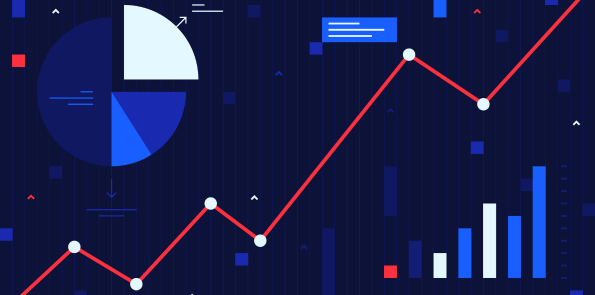Technical Analysis Made Simple: Unlocking the Secrets of Forex Charts

Дослідження ринку
Technical Analysis Made Simple: Unlocking the Secrets of Forex Charts
Introduction
When it comes to trading in the foreign exchange market, one of the most powerful tools at a trader's disposal is technical analysis. This method of analyzing price charts and identifying patterns has been used by traders for decades to help them make informed decisions. While technical analysis may seem complex at first, with a little bit of knowledge and practice, anyone can unlock the secrets of forex charts.
Understanding Forex Charts
Before diving into technical analysis, it's essential to understand how forex charts work. A forex chart is a graphical representation of the price movement of a currency pair over a specific period. The vertical axis represents the price, while the horizontal axis represents the time. Forex charts come in different forms, including line charts, bar charts, and candlestick charts.
Line Charts
A line chart is the most basic type of forex chart. It plots the closing prices of a currency pair over a given period, connecting them with a continuous line. Line charts are straightforward and provide a quick overview of the overall trend in the market. However, they do not provide much information regarding price fluctuations within a specific time period.
Bar Charts
A bar chart provides more detailed information than a line chart. It consists of bars that represent the high, low, open, and close prices of a currency pair for a given period. The high and low prices are represented by vertical lines, with the top of the bar indicating the high and the bottom indicating the low. The open and close prices are represented by horizontal lines extending from the bar, with the left line indicating the open price and the right line indicating the close price.
Candlestick Charts
Candlestick charts are the most popular type of forex chart among traders. They provide a wealth of information about a currency pair's price movement, making it easier to identify patterns and trends. Each candlestick represents the open, close, high, and low prices for a given period. The body of the candlestick is filled or hollow, depending on whether the closing price is higher or lower than the opening price.
Key Technical Analysis Tools
Trend Lines
Trend lines are one of the fundamental tools used in technical analysis. They help identify the direction of the market trend and act as potential support or resistance levels. An uptrend is formed by connecting a series of higher lows, while a downtrend is formed by connecting a series of lower highs. When the price breaks a trend line, it may signal a trend reversal or a continuation in the opposite direction.
Support and Resistance Levels
Support and resistance levels are price levels at which the market has historically had difficulty breaking through. Support levels are areas where buying pressure is expected to push the price higher, while resistance levels are areas where selling pressure is expected to push the price lower. Identifying support and resistance levels can help traders make decisions on when to enter or exit trades.
Simple Moving Averages (SMA)
A simple moving average is a tool used to smooth out price data and identify the overall trend. It is calculated by summing up a predetermined number of closing prices and dividing the sum by the number of periods. Traders often use moving averages to determine the direction of the market and identify potential entry or exit points.
Applying Technical Analysis
Once you understand the basic concepts of technical analysis and how to read forex charts, you can start applying these tools to your trading strategy. Here are a few tips to get you started:
- Identify the trend: Determine whether the market is in an uptrend, downtrend, or a range-bound phase.
- Draw trend lines: Connect the highs or lows of the price to identify the trend and potential support or resistance levels.
- Use support and resistance levels: Watch for price reactions at these levels and consider them while making trading decisions.
- Combine indicators: Use a combination of technical indicators, such as moving averages, oscillators, or volume indicators, to confirm your analysis.
- Practice and refine: Technical analysis requires practice. Keep a trading journal to track your analysis and refine your trading strategy over time.
Conclusion
Technical analysis is a powerful tool that can help traders make informed decisions in the forex market. By understanding the different types of forex charts and key technical analysis tools, you can unlock the secrets hidden within the price data. Remember that technical analysis is not foolproof and should be used in conjunction with other forms of analysis to increase the probability of success. With practice and dedication, you can become proficient in technical analysis and enhance your trading skills.


